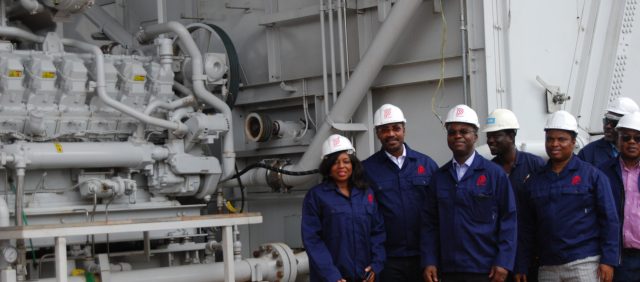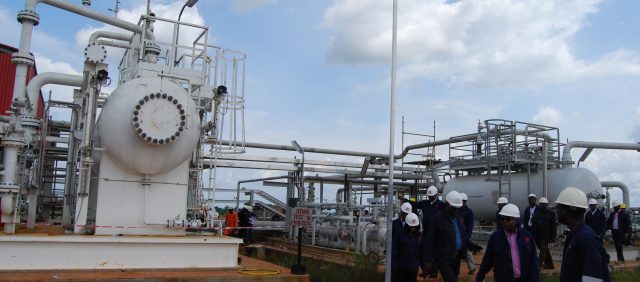Polaris Bank GMD visits multimillion-dollar oil and gas projects ahead of commissioning
The Group Managing Director of Polaris Bank Limited, Adetokunbo Abiru has visited Pan Ocean Oil Corporation’s OML-147 flow station at Owa- Alidinma and the Ovade-Ogharefe Gas Processing/LPG Propane Plant II, both in Delta state.
The multimillion-dollar projects which are slated for commissioning in the next few months are set to be game changers in the oil and gas industry. They will contribute immensely to national electricity supply and crude oil output when fully operational.
Under the leadership of Pan Ocean Oil Corporation’s Chairman/ Managing Director, Festus Fadeyi, OPL 275 (Oil Prospecting Lease 275) was converted to OML 147 (Oil Mining Lease 147) in 2014 to enable drilling for first oil and subsequent production. When full production commences, OML 147 is expected to attain peak output of 11,000 barrels of crude oil and 90 million standard cubic feet of gas per day.

On the other hand, the Ovade-Ogharefe Gas Processing Plant/LPG Propane Plant II will boost electricity supply in the country as it will serve as a close source of lean gas to the NIPP Power Plant sited at Ihobbor, Edo State. The facility will also supply LPG (Liquefied Petroleum Gas) to households across the country.

Speaking during the one-day facilities tour, Abiru, who was accompanied by Tutu Alu, Group Head Corporate Banking, Polaris Bank, said, “a lot of work and investment has gone into these projects, based on what I have seen. However, our priority at the moment is the commissioning and the cashflow that will follow.”
Phase II of the Ovade-Ogharefe Gas Processing Plant/LPG Propane Plant is designed to expand gas processing capacity at the plant to 200 million standard cubic feet per day. It incorporates a cryogenic process to deliver bone-dry gas streams, LPG and other natural gas liquid streams for domestic and international use.
According to the Base Operations Manager, Monday Ikhureigbe, “29 storage tanks are already in place at this facility, they were built to store approximately 194,400 gallons of Propane and 244,640 gallons of Propane/Butane mix (LPG) from an in-feed gas of 200MMSCF/D.”

Also speaking during the tour, Seyi Oladapo, Chief Finance Officer, Pan Ocean Oil Corporation, disclosed that, “the gas plant will help Nigeria as a country further drive its vision of higher LPG penetration, which is an important component of the World Bank’s Sustainable Development Goals.”
Both projects stand out as tall examples of what can be accomplished by Nigerian engineers and banks when resources are properly coordinated. Finance for the projects was provided by a consortium of banks led by Polaris Bank Limited (Former Skye Bank Plc) and although the projects missed their expected dates of completion, there is high certainty that full operation will begin in 2019.
During a visit to the Ovade-Ogharefe Gas Processing Plant last year, the Chairman Senate Committee on Gas Senator Bassey Albert Akpan commended Pan Ocean Oil Corporation for the massive investment the company is putting into actualizing the dream of better utilization of natural gas in the country. “The investment here is quite commendable because in the past these were issues left in the hands of expatriates,” Senator Akpan said at the time.
“At Pan Ocean we strive to advance efficiency, reduce operating expenditure, while maintaining a healthy balance with the environment,” Amieyeofori Felix, Executive Consultant, Operations, Pan Ocean Oil Corporation, who led the tour of the facilities said. “We are focused on contributing to national development using local resources, this has been a long journey for us as a company and we are glad that our efforts will soon start paying off,” he added.
The gas processing project at the Ovade-Ogharafe oil field is registered under the United Nations Clean Development Mechanism (CDM) of the Kyoto Protocol. The project is designed to reduce greenhouse gas emission by more than two million tons of carbon dioxide annually. CDM allows for greenhouse gas emission reduction from projects in developing countries to be registered and monitored under the UN so that these reductions can be sold to developed countries that have emission limits.

